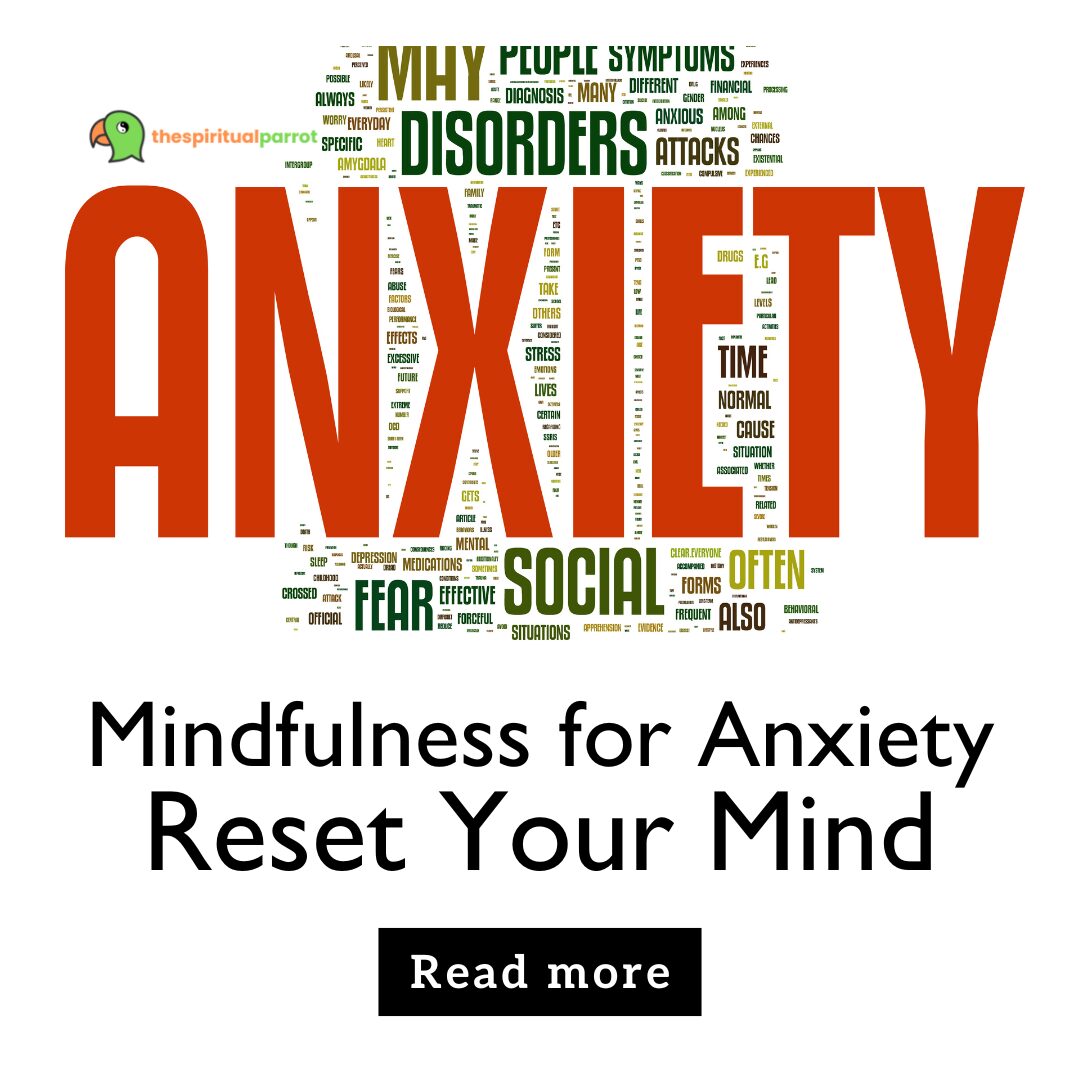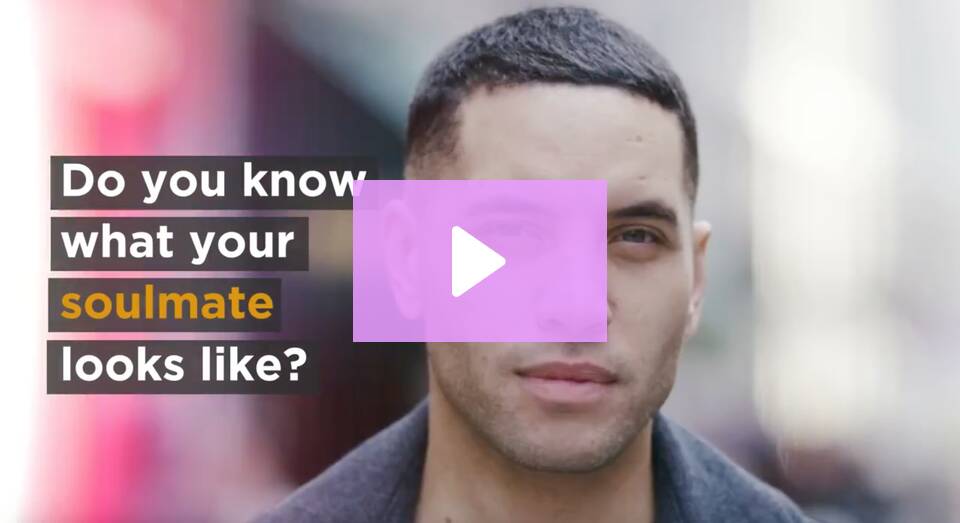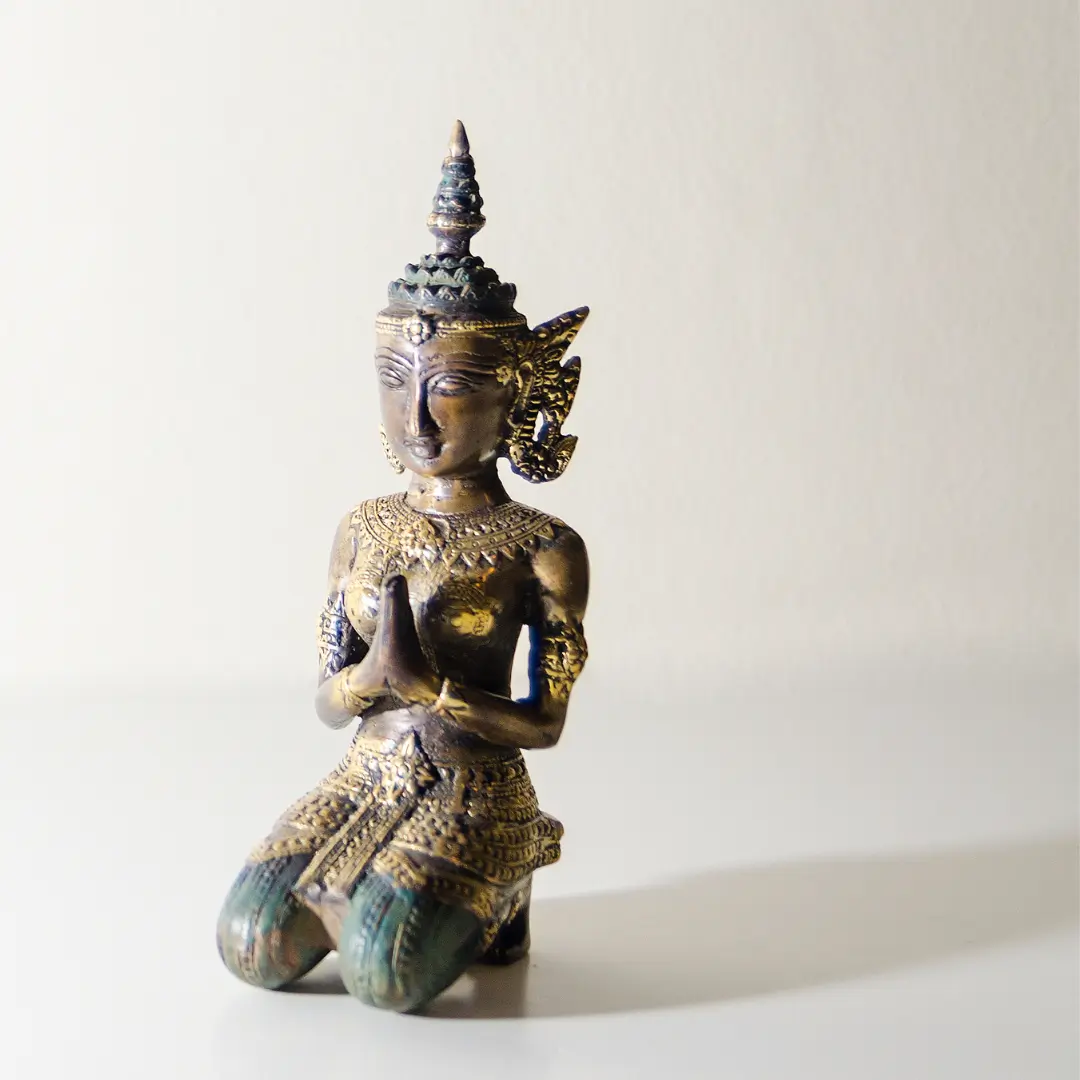Anxiety has a way of hijacking everything — your breath, your thoughts, even the way your body feels in space. It can turn the most ordinary moments into minefields of what-ifs and worst-case scenarios. You might look calm on the outside, but inside? It’s chaos.
We often hear “be mindful” as if it’s a magical fix. But when your nervous system is in overdrive, the last thing you want is to sit still and try to empty your mind. That kind of advice can feel out of touch, even frustrating.
Mindfulness for anxiety isn’t about achieving perfect peace or sitting cross-legged in silence. It’s about learning how to gently reset — to bring your attention out of panic and back to what’s real, right now. No performance. No pressure.
In this post, you’ll learn how anxiety hijacks the mind, why mindfulness helps you take it back, and how to use a simple 3-step technique to ground yourself — anytime, anywhere.
Why Anxiety Hijacks Your Mind So Easily
Anxiety doesn’t ask for permission — it shows up unannounced and fills your head with noise. One minute you’re checking an email, the next you’re spiraling through imaginary disasters or replaying awkward conversations from three days ago.
That’s not you being dramatic. It’s your brain doing what it was designed to do — scan for threats. The problem is, in today’s world, those threats aren’t wild animals or fire. They’re inboxes, text replies, crowded spaces, deadlines, or just an uncomfortable silence.
Your nervous system gets activated over and over again throughout the day. And because anxiety is future-focused, it keeps your mind locked in what might happen next — not what’s happening right now.
This is why mindfulness for anxiety is so powerful. It brings you back. Not in a forced “just calm down” kind of way — but through gentle awareness. It pulls your attention out of imagined problems and into something you can actually feel, name, or breathe through.
That return — even for a moment — is a mental reset. And doing it often is how you begin to reclaim your focus, your breath, and your sense of self.

What Is Mindfulness — And Why It Helps With Anxiety
You’ve probably heard the word “mindfulness” more times than you can count. It shows up on wellness blogs, meditation apps, even cereal boxes. But what does it actually mean — especially when you’re anxious?
At its core, mindfulness is simply being aware of the present moment without judgment. That’s it. You’re not trying to fix, force, or analyze what’s happening — just noticing it with clarity and curiosity.
So why does that help with anxiety?
Because anxiety pulls you into the future. It spins stories about what might go wrong, what you’ve missed, what you haven’t fixed yet. Mindfulness brings you back to what’s actually happening — not what your brain is predicting.
Benefits Of Using Mindfulness for Anxiety
When practiced consistently, mindfulness:
- Lowers cortisol levels (your body’s main stress hormone)
- Calms overactive thought patterns
- Increases emotional awareness and self-regulation
- Builds mental distance between you and your anxious reactions
And no — it doesn’t require a dark room, incense, or 30 minutes of uninterrupted silence. Even one mindful breath, one moment of awareness, can shift your state. That’s why mindfulness for anxiety isn’t about perfection. It’s about pattern-breaking.
And the best part? You can do it anywhere. The next section walks you through a technique that takes less than five minutes — and doesn’t ask your mind to be quiet.
Try This Reset — A 3-Step Mindfulness Technique
You don’t need to meditate for 30 minutes or light a candle to feel better. Sometimes, all it takes is a short pause — one that gently interrupts the loop anxiety pulls you into.
This mindfulness reset is simple, portable, and designed for anxious moments. It works because it combines three powerful actions: noticing, naming, and breathing. Let’s walk through it.
Step 1: Notice the Now
Look around. Slowly pick out three things you can see, two things you can hear, and one thing you can feel (like your feet on the ground or your shirt on your skin). This sensory scan pulls your attention away from mental noise and anchors it in physical space.
Why it works: Your senses are always in the present. Tuning into them calms the nervous system and breaks the thought spiral.
Step 2: Name the Feeling
Pause and ask yourself: What am I feeling right now? Don’t overthink it — choose a word. Anxious. Tense. Jumpy. Foggy. Naming the feeling creates a small but powerful space between you and the emotion.
Why it works: Labeling emotions activates the brain’s language center and quiets the amygdala — the area responsible for anxiety responses.
Do You Know What Your Soulmate Looks Like?
Step 3: Breathe with Intention
Now, take a slow inhale for 4 counts… and exhale for 6. Repeat 3–5 times. If it helps, silently say a calming phrase with each breath like “I am safe,” “This will pass,” or “Breathe in calm, breathe out fear.”
Why it works: Slowing your exhale signals safety to your nervous system and helps regulate your heart rate.
You can do this reset anytime — at your desk, before a call, in a bathroom stall, or lying in bed at 2 AM. It doesn’t ask you to stop your thoughts. It just offers a way back to yourself.
When to Use This Mindfulness Reset
One of the biggest misconceptions about mindfulness is that it’s something you set aside time for — like a morning routine or an evening ritual. While that can help, mindfulness is most powerful when it shows up in the moments you need it most.
This 3-step reset isn’t just a practice — it’s a response. You use it not before life happens, but right in the middle of it.
Here are some perfect times to use this mindfulness reset:
- Before a Stressful Conversation: Whether it’s a work call, a confrontation, or just an overwhelming Zoom meeting — take 30 seconds beforehand to ground your breath and body.
- During a Spiral of Overthinking: When your mind jumps from one worry to another, pause and do a sensory scan. This gently interrupts the loop and brings you back.
- After Too Much Scrolling: Social media and news can leave you overstimulated without realizing it. Use the reset as a way to step back into your body and out of the digital fog.
- Late at Night When You Can’t Sleep: Restless minds need anchoring, not distractions. This technique works better than doom-scrolling — and helps slow your nervous system down.
- Before You Start Your Day: Doing this reset as a short morning check-in — even while brushing your teeth — can create a calm baseline before external stressors kick in.
The point isn’t to be perfect. It’s to notice, pause, and reset — even just for a moment. That’s where the shift begins.
Small Habits That Build Mindful Calm Over Time
Mindfulness isn’t just something you “do” once. It’s something you slowly weave into the small moments of your day — and that’s what makes it stick. The good news? These habits don’t require extra time. They just ask you to do what you’re already doing, with a little more awareness.
Here are a few micro-habits that work beautifully alongside your 3-step reset.
Start with 1-Minute Breath Check-Ins
You don’t always need a long session to feel grounded. A single deep breath can act like a mini anchor — especially when you do it often. Try checking in once every few hours: pause, take a slow inhale, long exhale, and notice how your body feels afterward.
This small pause helps re-center your focus before it wanders into stress mode.
Make Your Morning Phone-Free (Even 10 Minutes Helps)
Instead of grabbing your phone first thing, spend a few quiet minutes with yourself. Sit by the window, drink your tea slowly, or just breathe. You’re not avoiding life — you’re easing into it. That slow entry matters.
Morning stillness sets the tone for a steadier mind throughout the day.
Pair Mindfulness with Existing Habits
Link mindful moments with things you already do: brushing your teeth, washing dishes, waiting at a red light. Use those pockets of time to bring awareness to your breath or body.
This habit stacking makes mindfulness effortless and consistent.
Use Transitions as Checkpoints
Anytime you shift activities — like finishing a task or switching rooms — do a 10-second body scan or mental reset. Transitions are naturally reflective moments, and using them well keeps your anxiety from snowballing across your day. Think of it as wiping the slate clean before moving to the next moment.
None of these habits require major effort. But over time, they rewire your baseline — helping your nervous system stay calm, your focus stay sharper, and your anxiety feel a little less in charge.
You Don’t Need to Escape Your Mind — Just Reset It
If you live with anxiety, you know how exhausting it can be to constantly fight your own thoughts. But the truth is, you don’t need to silence your mind — you just need to learn how to reset it gently, one moment at a time.
Mindfulness for anxiety isn’t about being calm all the time. It’s about building the skill of returning. Returning to your breath. To your senses. To the present moment — even if your hands are shaking or your heart’s racing.
This isn’t about getting it right. It’s about getting back.
Try the 3-step reset the next time your thoughts start spiraling. Or start with one mindful habit in your morning. You don’t have to change your life to change your relationship with anxiety. You just have to begin — with one breath, one moment, one reset.














